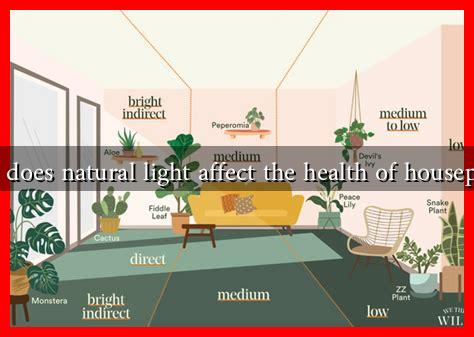-
Table of Contents
- How Does Natural Light Affect the Health of Houseplants?
- The Importance of Natural Light for Photosynthesis
- Types of Natural Light and Their Effects
- 1. Direct Light
- 2. Indirect Light
- 3. Filtered Light
- Case Studies: The Impact of Light on Houseplant Health
- Tips for Maximizing Natural Light for Houseplants
- Conclusion
How Does Natural Light Affect the Health of Houseplants?
Houseplants have become a staple in many homes, not only for their aesthetic appeal but also for their ability to improve indoor air quality and enhance overall well-being. However, the health of these plants is significantly influenced by the amount and quality of natural light they receive. This article explores the relationship between natural light and houseplant health, providing insights into how to optimize light conditions for thriving greenery.
The Importance of Natural Light for Photosynthesis
Photosynthesis is the process by which plants convert light energy into chemical energy, allowing them to grow and thrive. Natural light is crucial for this process, as it provides the spectrum of light that plants need to produce food. Here are some key points regarding the role of natural light:
- Light Spectrum: Plants primarily utilize blue and red wavelengths for photosynthesis. Blue light promotes vegetative growth, while red light is essential for flowering and fruiting.
- Intensity: The intensity of light affects the rate of photosynthesis. Insufficient light can lead to stunted growth, while excessive light can cause leaf burn.
- Duration: Most houseplants require 12-16 hours of light per day for optimal growth. The duration of exposure can vary based on the plant species.
Types of Natural Light and Their Effects
Natural light can be categorized into three types: direct, indirect, and filtered light. Each type has distinct effects on houseplants.
1. Direct Light
Direct sunlight occurs when sunlight hits the plant directly, typically through a south-facing window. While many plants thrive in direct light, such as succulents and cacti, others may suffer from leaf scorch.
2. Indirect Light
Indirect light is diffused sunlight that reaches plants without direct exposure. This type of light is ideal for many houseplants, including ferns and pothos, as it mimics their natural habitat.
3. Filtered Light
Filtered light occurs when sunlight passes through sheer curtains or is obstructed by other objects. This light is softer and can be beneficial for plants that are sensitive to direct sunlight.
Case Studies: The Impact of Light on Houseplant Health
Several studies have demonstrated the importance of natural light for houseplants. For instance, a study published in the journal “Photosynthesis and Growth of Houseplants in Different Light Conditions” found that plants exposed to optimal light conditions exhibited a 30% increase in growth rate compared to those in low-light environments. Another case study involving the popular houseplant, the Monstera Deliciosa, showed that plants receiving adequate indirect light developed larger leaves and more robust root systems.
Tips for Maximizing Natural Light for Houseplants
To ensure your houseplants receive the best possible light, consider the following tips:
- Assess Light Levels: Use a light meter or smartphone app to measure the light intensity in different areas of your home.
- Rotate Plants: Regularly rotate your plants to ensure all sides receive equal exposure to light.
- Choose the Right Location: Place light-loving plants near windows, while shade-tolerant species can be positioned further away.
- Use Reflective Surfaces: Position plants near mirrors or light-colored walls to enhance light distribution.
Conclusion
Natural light plays a pivotal role in the health and vitality of houseplants. Understanding the different types of light and their effects can help plant owners create optimal growing conditions. By providing the right amount and quality of light, you can ensure that your houseplants not only survive but thrive, enhancing your living space and contributing to your overall well-being. Remember, a well-lit plant is a happy plant!


